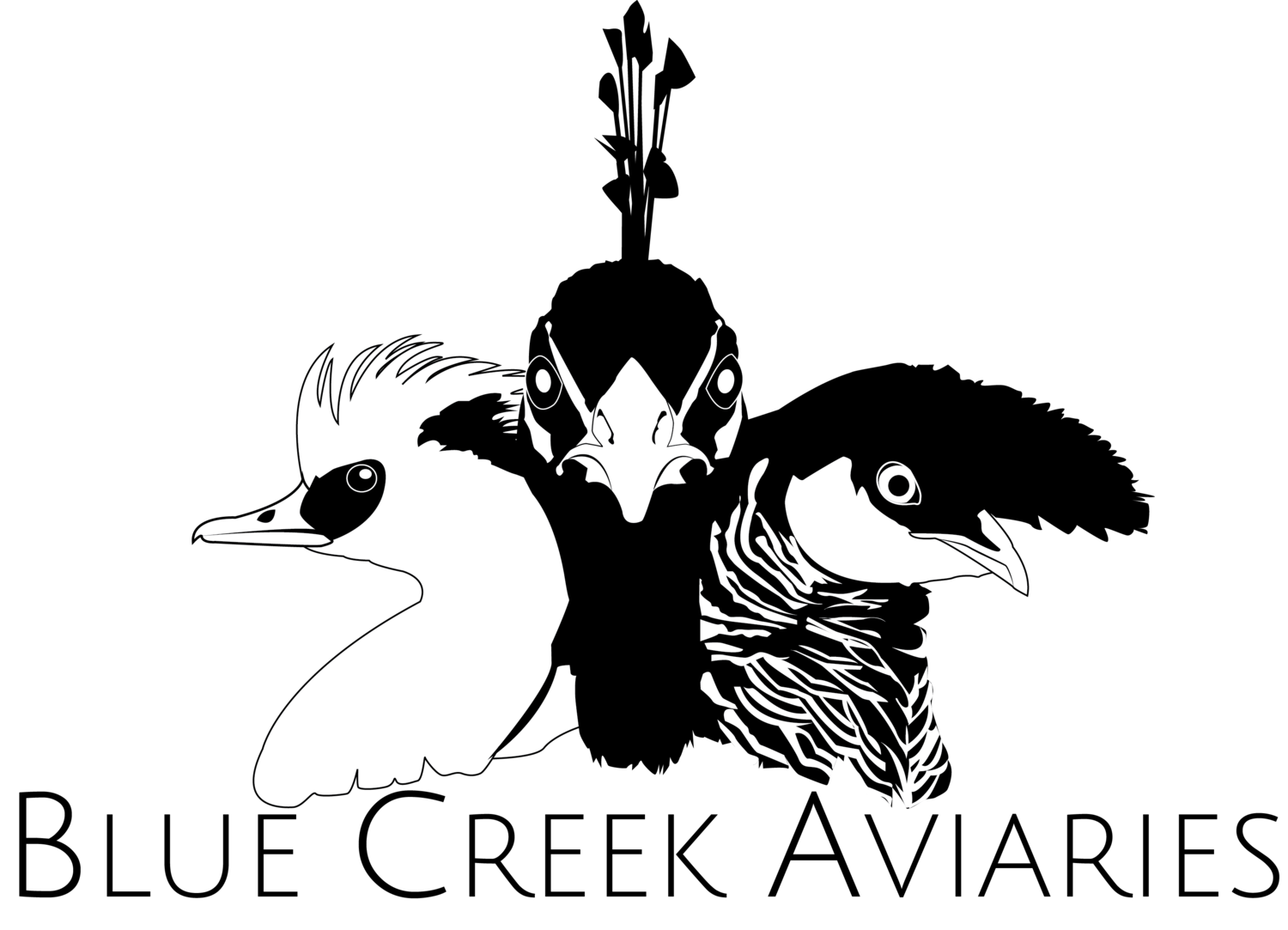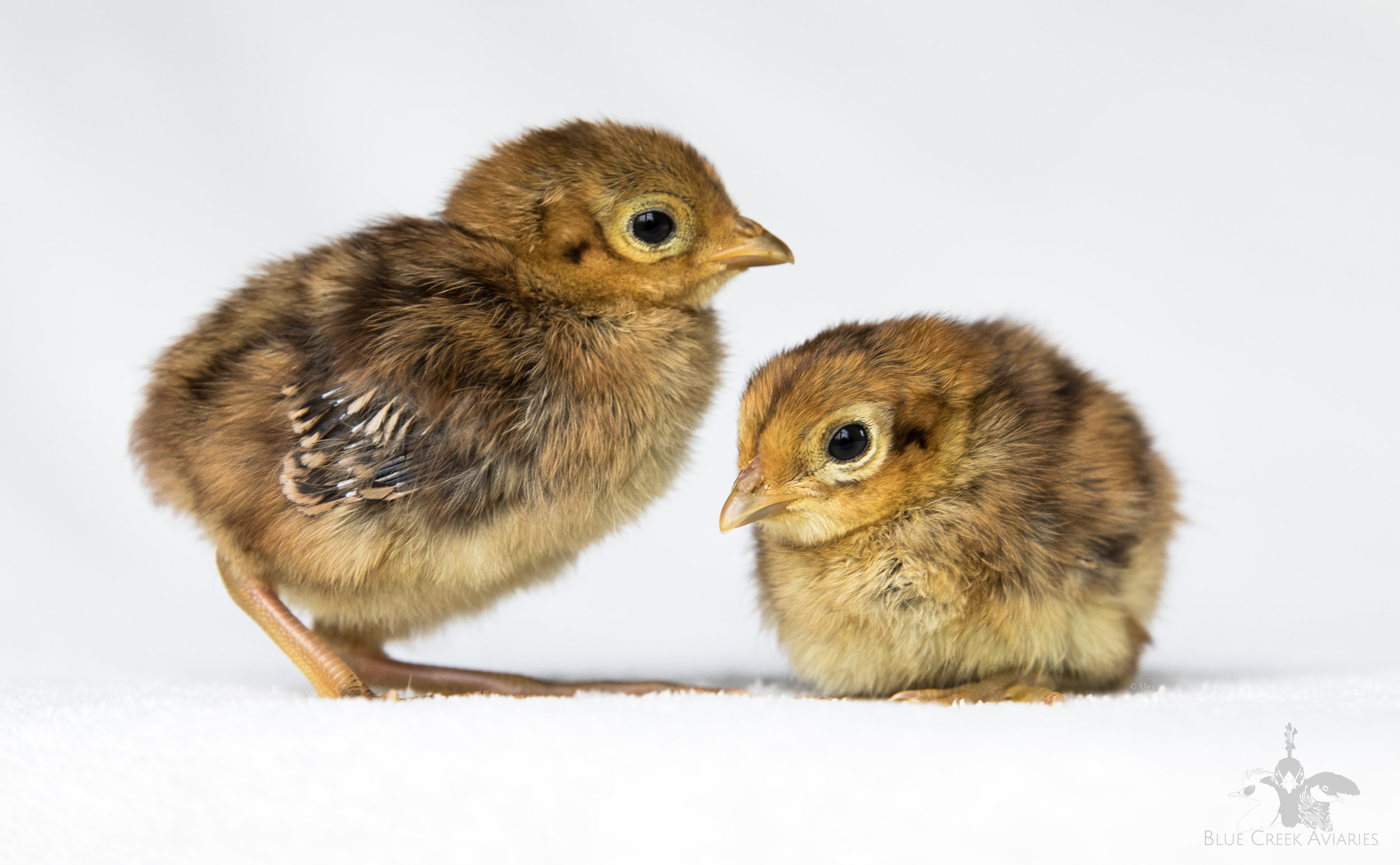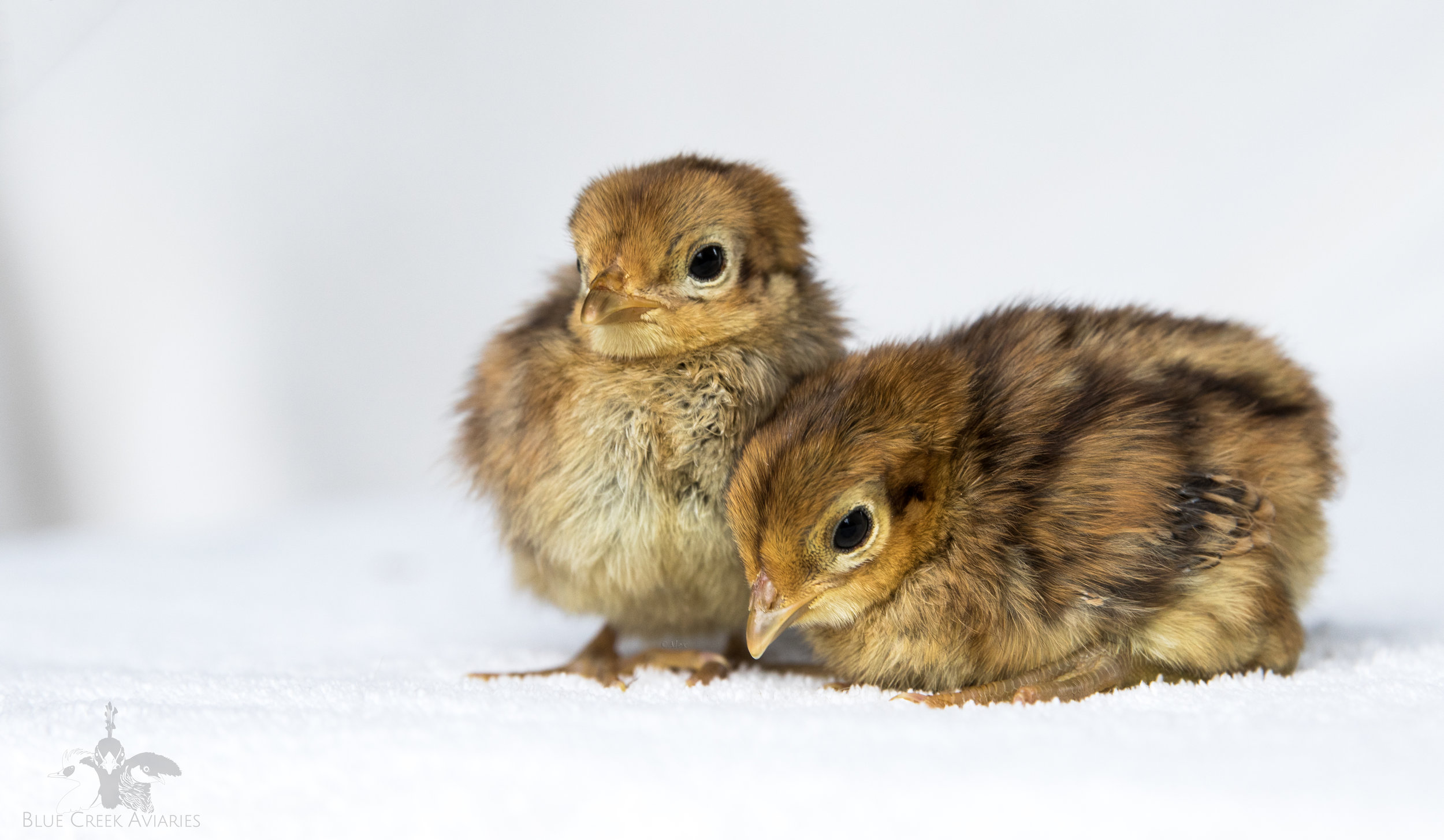Lady Amherst’s Pheasant
The Lady Amherst’s pheasant (Chrysolophus amherstiae), found in Southwestern China and Northern Burma, is an ornamental bird commonly found in the collections of many aviculture enthusiasts across the United States. It is considered a ruffed pheasant, since the males sport an elaborate ruff which is utilized during the courtship displays. The males take two years to acquire their breeding plumage, which features multiple contrasting colors. The crown of the males is dark green, followed by a red crest. The ruff consists of white feathers outlined with black, creating a stunning scaled effect. The facial skin is supposed to be light blue. The underside of the males is supposed to be a pure white color (hints of buff or red coloring suggest a hybrid). The upper back has green scales similar to those of the chest region. The wing plates are covered in blue feathers. The actual back is yellow, which turns to an orange-red by the base of the tail. The tail is white with black bars (hybrids will usually do not have solid, un-broken bars). The females are a rufous brown color overall. They too have blue facial skin and blue-grey legs like those of a male. During courtship, the male chases the female and his display includes extending the ruff and hissing-like vocalizations. Lady Amherst’s pheasants are a pleasure to watch and raise.
Although not endangered, the Lady Amherst’s pheasant is becoming increasingly harder to find in its pure form in captivity. A closely related species, the golden pheasant, can hybridize with Lady Amherst’s pheasants to produce fertile offspring. Crosses have occurred in captivity and the hybrid progeny have been bred, being passed as pure stock. Others also attempt to create color mutations, which are usually hybrids. Most do not realize the damage this causes to the dwindling gene pool of pure specimens. Pure birds are challenging to find, but not impossible. More people need to focus on keeping these gorgeous pheasants pure, since one of the objectives of aviculture is preserving birds in their pure form. I suggest educating oneself on the Lady Amherst’s pheasant and finding reputable stock, which is typically out of imported lines, as I have done (our stock is from Kurt Landig’s Chinese imports). This species is a great beginner pheasant to help people gain experience before pursuing other species.
In terms of their care, Lady Amherst’s pheasants are the same in terms of maintenance and breeding as the golden pheasant. I have found that my Lady Amherst’s pheasants do not lay as many eggs as the golden pheasants, but they are nonetheless productive. The incubation period is 22-23 days, and the chicks are easy to raise. Since the chicks can fly within days of hatching, their brooders must be designed in a manner that keeps them from flying out.
Although Lady Amherst’s pheasants remain in the collection, they are not being bred and we do not anticipate having surplus birds for sale.
Below are some photos of few day old Lady Amherst’s pheasant chicks. Visit the golden pheasant page as well to see how these ruffed pheasant species compare.



